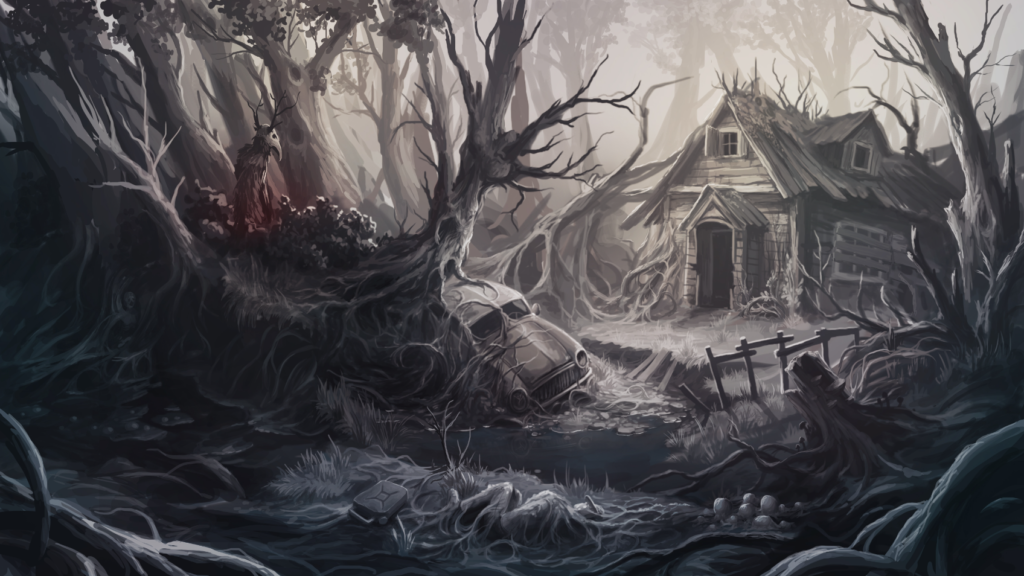Played on an LG C3 55” OLED Display via Steam, AMD 7900 XTX and i9-10900k.
Publisher: Konami
Developer: Konami
Next year marks the 40th anniversary of Castlevania, a fact that’s hard to wrap my head around. It still feels like yesterday that I was reading Nintendo Power magazines from second-hand shops and watching the game get mentioned by the Angry Video Game Nerd and G4TV. Back then Castlevania was barely more than a decade old. I played it a few times, even beat it thanks to emulation with save states and rewind functionality, but it never stuck with me. Looking back, I realize I brute-forced my way through it, never truly learning the levels or understanding why the game has remained so beloved.
Determined to change that, I took a break between Kingdom Come: Deliverance II sessions and sat down to play through the NES version properly—then the Famicom Disk System version. Then I played them again, and again, and again.
Each time I booted it up, I put myself in the mindset of a kid coming home from school—or in my case, from work. I turned off the lights, applied a CRT filter, and let the glow of the TV immerse me in the gothic and macabre 8-bit world.
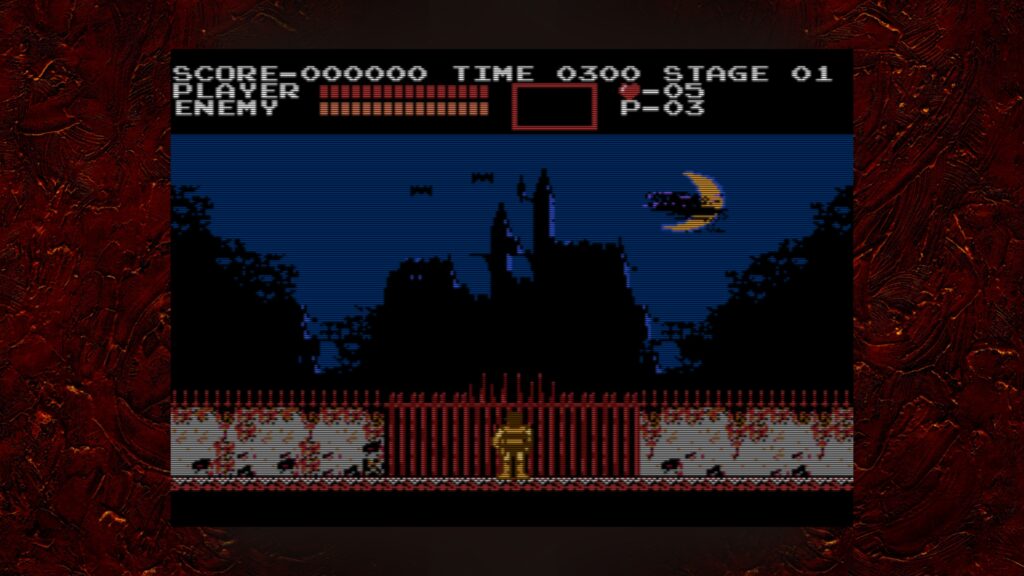
The game transports us to Transylvania, 1691. Whispers spread among the people of an ancient evil that once plagued the land a century prior. As they celebrate Easter with a grand carnival, a secret coven gathers in the ruins of an abandoned monastery. Beneath flickering candlelight, they conduct a Black Mass, slowly pouring sacrificial blood over ancient remains at the room’s center. Suddenly, the sky darkens. Clouds churn. A bolt of lightning splits the heavens. The Prince of Darkness has returned.
From the abyss, a gothic fortress emerges where nothing stood before—Castlevania has risen once more.
But there is hope. A lone warrior approaches the cursed stronghold, whip in hand. Simon Belmont, heir to the legendary Belmont Clan, has come to banish the darkness that grips the land.
The moon hangs low, casting eerie shadows across the towering castle. Its jagged silhouette looms in the night, an omen of the horrors within. The rusted gates creak open, inviting you into the courtyard—a moment of eerie calm before the storm of terror that awaits.
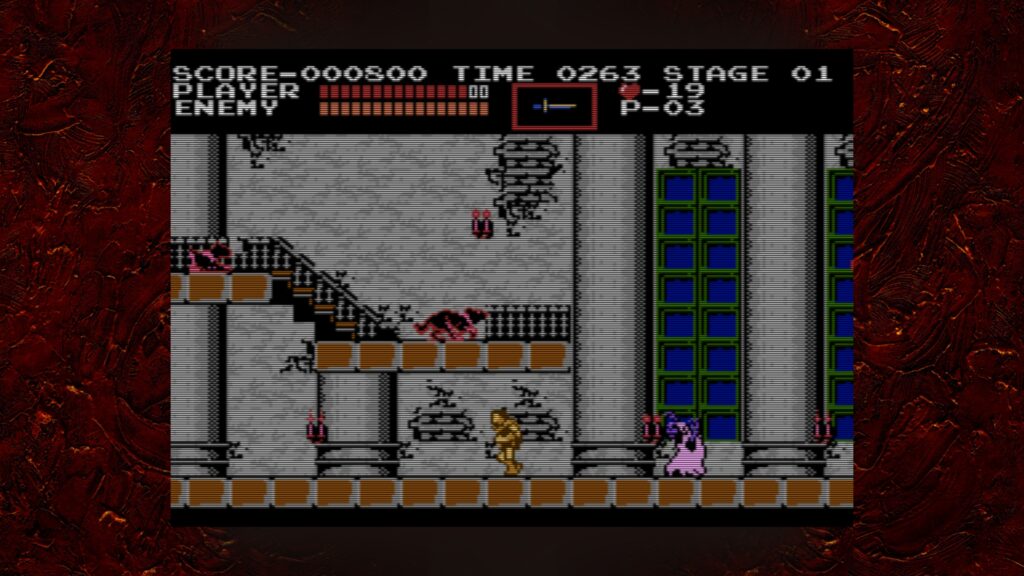
This is your chance to familiarize yourself with the weight of your movements, the reach of your whip, and the resources essential for survival. Simon is no ordinary man—he has trained for years for this battle. Every movement must be committed to. If you jump, you follow through. If you are hit, you recoil. When you attack, you are locked in place until your whip returns to your side. Mastery of these mechanics will be key to your survival.
The game eases you in with simple enemies—lowly ghouls and beasts easily dispatched with a well-placed strike. Careful jumps allow you to evade foes if you time them right. As you press deeper into the castle, you collect resources: Hearts to fuel your sub-weapons, Pot Roasts hidden in walls to restore health, and blocks etched with a roman numeral that let you use sub-weapons multiple times in succession. Eventually you will arrive before a massive bat, double your size. This is the first boss—one that introduces the importance of airborne enemies and complex movement patterns. Not every enemy in Castlevania will move in a specific pattern. Some will change depending on where you are located on screen, requiring quick reflexes if you want to avoid getting hit. If you were thorough in destroying candelabras, you would have picked up an Axe, an invaluable tool against flying foes. This is where Castlevania teaches one of its most vital lessons: the significance of sub-weapons. If you manage to keep hold of the right one, your survival chances drastically improve especially in boss battles.
Of course, no matter how skilled a vampire hunter you become, mistakes accumulate. Too many hits, a mistimed jump into a pit, or running out of time—each results in the loss of a life. Fortunately, the game isn’t overly cruel. You respawn at the nearest checkpoint until your lives run out. If you run out of lives, you are placed at the beginning of the section, just after the previous boss fight. Only if you turn off the game do you have to start from the very beginning. However, death comes with setbacks: you lose all whip upgrades and sub-weapons. While the whip can be powered up again within seconds, finding a preferred sub-weapon can be more frustrating. You either grind enemies for a chance drop or locate a specific candle containing the one you need—though it might not always be the ideal tool for the upcoming challenge.
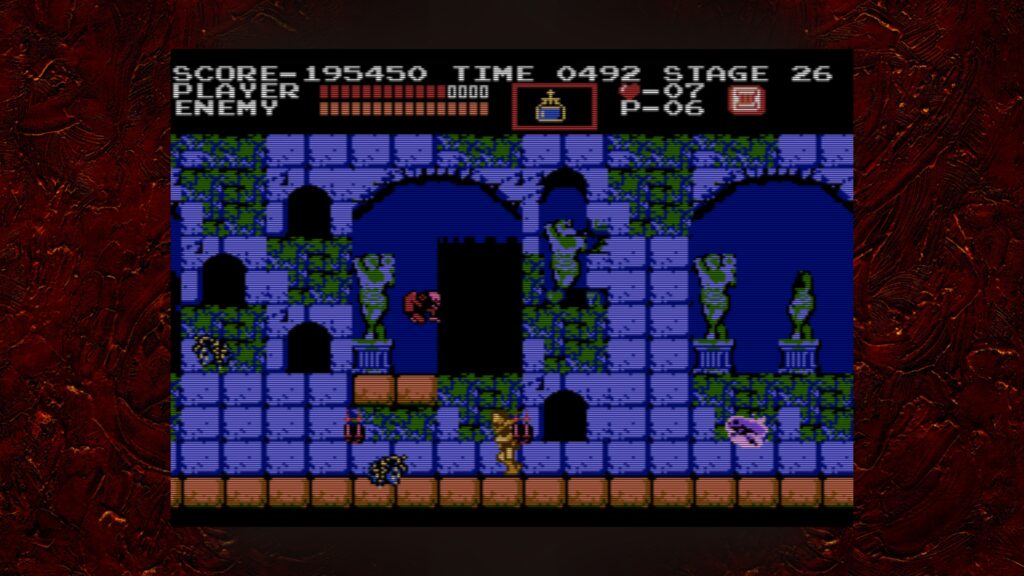
This is where Castlevania truly shines. Its challenge isn’t rooted in cheap tricks but in a masterful balance of platforming, enemy placement, and resource management. What first seems insurmountable gradually becomes second nature as you decipher enemy patterns and environmental hazards. Every foe is introduced in a controlled scenario, allowing you to learn its behavior before the game raises the stakes. Fleamen, with their unpredictable leaps, are best dispatched before they overwhelm you. Medusa Heads, infamous for knocking players into bottomless pits, follow a hypnotic wave-like pattern—easily avoided if you stay grounded and move with purpose.
Each stage unfolds like a chapter in a dark tale, weaving its narrative through both setting and gameplay. The foyer welcomes you with a false sense of dominance as you tear through lesser creatures, feeling like an unstoppable force. But the castle quickly reminds you who is truly in control. By the time you reach the battlements, every step demands caution—treacherous gaps and relentless skeletal sentinels punish the reckless. And then there’s the Clocktower, the final gauntlet before Dracula’s lair. Here, the game shifts once more, urging you to move swiftly, dodge precisely, and choose your battles wisely. Each moment is a test, and every success feels earned.
The NES version is the more challenging of the two, but arguably the weaker version. In Japan, Castlevania debuted on the Famicom Disk System, which offered additional sound channels, the ability to save, and most notably, an Easy Mode. While the lack of extra sound channels doesn’t diminish the incredible soundtrack—featuring the iconic “Vampire Killer”—, nor does the lack of the save feature as all current releases offer the use of save states, the absence of Easy Mode is the real loss.
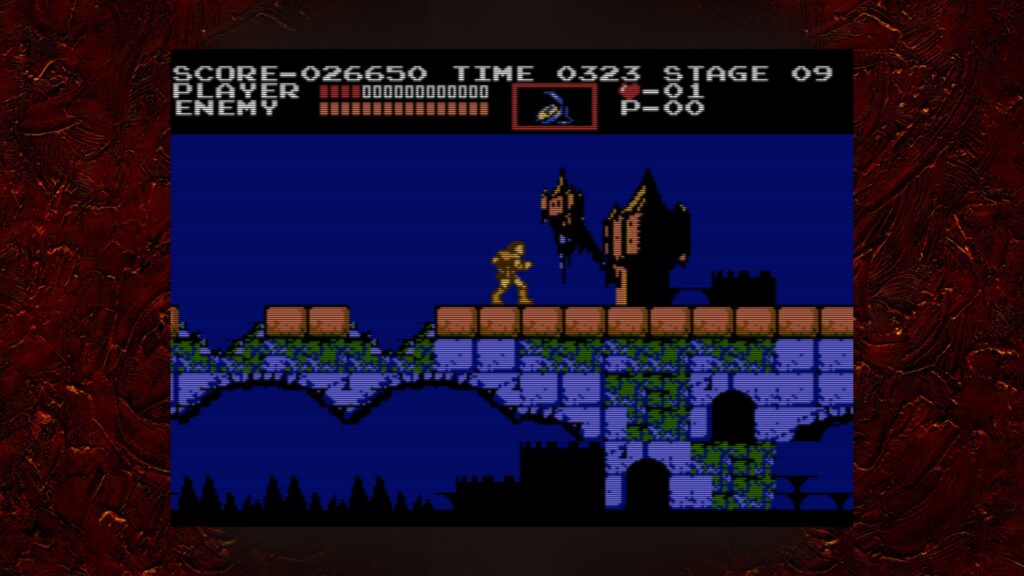
Easy Mode offers numerous quality-of-life improvements: removing knockback from enemy hits, reducing incoming damage, increasing boss vulnerability, granting more starting lives, and allowing players to retain sub-weapons and upgrades after death. Perhaps most significantly, sub-weapon upgrades persist even when switching to a new weapon. This mode provides a smoother difficulty curve, letting players gradually develop their skills rather than facing a trial by fire. The NES version, like many Western releases, ramped up difficulty to discourage quick rentals, but in doing so, it missed an opportunity for a more accessible experience.
While purists may prefer the NES version’s challenge, the Famicom Disk System release presents an experience that is just as rewarding, yet more welcoming. The choice between the two ultimately depends on how one wishes to engage with Castlevania—as a grueling trial of perseverance or a steady journey toward mastery.
Thankfully, both versions are included in the Castlevania Anniversary Collection. The Famicom Disk System version requires no Japanese knowledge—all menus are in English—making it easy for newcomers to experience the game as originally intended.
After six dedicated hours and over a dozen full runs across both versions, I’m glad I took the time to truly master Castlevania—uncovering its hidden upgrades, secret healing items, and enemy exploits. It brought me back to an era when games didn’t hold your hand but instead trusted you to learn, adapt, and improve. Nearly four decades later, Castlevania still stands as one of the greatest platformers ever made—and now, I finally understand why.
If you are interested in other horror game reviews, please read my review of Silent Hill 2 Remake! You can also follow me on Twitter for updates and Instagram for travel photos and in-game screenshots!



